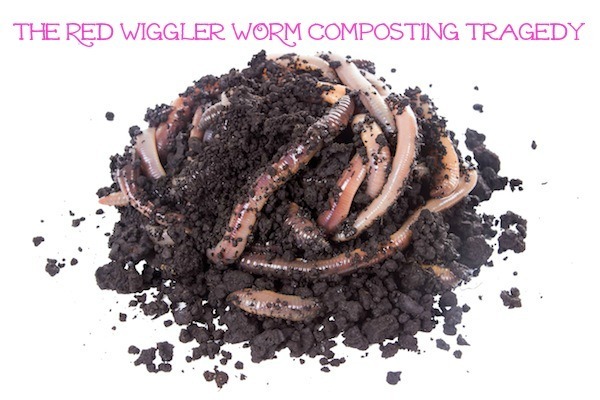Mastering Red Wiggler Composting: Essential Practices for Healthy And Balanced Composting
Mastering Red Wiggler Composting: Essential Practices for Healthy And Balanced Composting
Blog Article
Comprehending the Benefits of Red Wiggler Composting: Exactly How This Efficient Approach Transforms Organic Waste Into Nutrient-Rich Soil Amendments
Red Wiggler composting, using the species Eisenia fetida, offers a compelling approach to organic waste management, transforming kitchen area scraps and lawn particles into important soil changes. This technique not just improves dirt fertility however likewise addresses pressing environmental concerns, consisting of garbage dump waste reduction and greenhouse gas exhausts.
What Are Red Wigglers?
Red wigglers, clinically called Eisenia fetida, are a types of earthworm that play a pivotal role in vermicomposting systems. These worms are characterized by their reddish-brown shade, fractional bodies, and an unique capacity to grow in organic-rich settings, making them excellent for composting applications - Red Wiggler Composting. Unlike their garden-dwelling equivalents, red wigglers favor to live in the top layers of dirt, where rotting matter is abundant
Normally gauging between 3 to 4 inches in length, red wigglers have a high reproductive price, enabling them to increase quickly under optimal problems. They possess an one-of-a-kind digestive system that permits them to process natural waste successfully, transforming it right into nutrient-rich spreadings, which are extremely useful for plant development.
Their tolerance to varying moisture degrees and temperature level varies even more enhances their energy in vermicomposting arrangements, making them a favored choice amongst composting fanatics. Furthermore, red wigglers are cardio organisms, which demands a well-aerated composting atmosphere, making sure efficient decay. Recognizing the organic characteristics and habits of red wigglers is necessary for enhancing their usage in sustainable waste monitoring practices.

Benefits of Vermicomposting
Using the power of vermicomposting offers a wide variety of agricultural and environmental advantages. Firstly, it dramatically lowers organic waste in landfills, thereby minimizing methane discharges, a powerful greenhouse gas. By diverting food scraps and backyard waste to vermicomposting, we sustain a more sustainable waste management system.
Furthermore, vermicomposting improves soil wellness. The castings created by red wigglers are rich in crucial nutrients, germs, and enzymes, improving dirt structure and fertility. This nutrient-rich change advertises robust plant development and raises water retention, minimizing the demand for chemical plant foods.
Additionally, vermicomposting fosters biodiversity in the dirt community. The introduction of valuable bacteria from worm castings help in illness suppression and nutrient biking, creating a much healthier environment for plants.
Economically, vermicomposting decreases the costs related to chemical inputs and waste disposal. Garden enthusiasts and farmers can grow premium produce at lower expenses, contributing to food security and sustainability.
How to Begin Composting
Starting a composting venture can be a simple and gratifying procedure. This will assist maintain a well balanced temperature, vital for the composting procedure.
Collect natural products such as cooking area scraps, lawn waste, and shredded paper. Go for a well balanced mix of 'green' products, this post high in nitrogen (e.g., fruit scraps, coffee premises), and 'brown' materials, rich in carbon (e.g., dried fallen leaves, cardboard) A ratio of roughly 2:1 environment-friendly to brown materials is optimal.
Start layering your products, making sure ample air blood circulation by turning the stack on a regular basis. This advertises cardiovascular disintegration, speeding up and reducing odors up the process. Display wetness degrees; the garden compost needs to feel like a damp sponge however not excessively wet.
Nutrient Profile of Vermicompost
Composting, specifically with red wigglers, produces a nutrient-rich item known as vermicompost. In addition, it gives micronutrients like calcium, magnesium, and iron, cultivating durable plant development and improving dirt health and wellness.
The microbial activity present in vermicompost further enhances its profile, presenting useful bacteria and fungis that promote vitamins and mineral accessibility and uptake in plants. This biological part help in subduing plant illness and enhancing dirt framework, causing enhanced water retention and aeration.

Environmental Impact of Composting
The ecological impact of composting, particularly with making use of red wigglers, is profound and diverse. This technique significantly minimizes the quantity of organic waste sent to land fills, which in turn reduces greenhouse gas discharges, specifically methane-- a potent contributor visit homepage to climate modification. By drawing away natural materials from landfills, red wiggler composting not only assists minimize environmental degradation but likewise promotes sustainable waste administration methods.

Furthermore, composting adds to carbon sequestration, as the process catches co2 from the ambience and shops it in the soil. This natural procedure aids in combating environment adjustment while improving the soil - Red Wiggler Composting. On the whole, red wiggler composting presents a feasible, environment-friendly solution for waste management and environmental sustainability, advertising much healthier ecological communities and a more lasting future
Conclusion
In conclusion, Red Wiggler composting serves as an effective approach for converting organic waste into useful soil amendments. The process not only improves soil fertility and framework but also minimizes environmental issues connected with waste disposal.
Red Wiggler composting, using the varieties Eisenia fetida, offers a compelling method to organic waste monitoring, transforming kitchen scraps and backyard particles right into important dirt modifications. Unlike their garden-dwelling counterparts, red wigglers prefer to live in the top layers of dirt, where decomposing issue is abundant.
The castings produced by red wigglers are rich in vital nutrients, microbes, and enzymes, boosting dirt framework and fertility. The nutrient-rich byproducts of red try this site wiggler activity improve dirt framework, increase water retention, and advertise biodiversity within the soil community.In conclusion, Red Wiggler composting serves as an effective method for converting organic waste into valuable dirt modifications.
Report this page